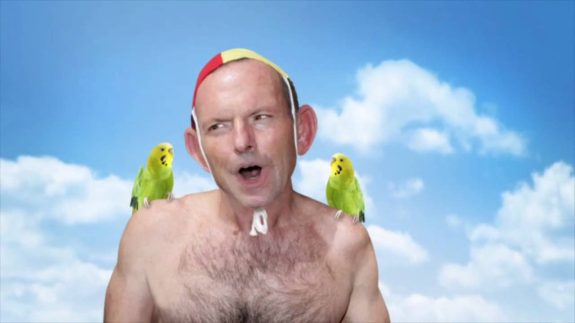In today’s modern society, in Australia science is failing to communicate to the broader social perspective. It is with a fervent attitude that we can only deduce that somewhere along the lines, the realism of scientific consensus has been misrepresented in social discourse. External influences, such as conglomerate media structures and political organisations, have distorted the relevant complexity of science, leading to an overt perversion of scientific reverence. So how can we bring science back from the brink? And, as it is said on the Australian five dollar bill – (“The greatest question which we have to consider is”) … What among all influences is the most crucial foreground for science to regain its lost confidence in social discourse?
Climate change is absolute, the globe is warming and long-term weather patterns are being altered (IPCC, 2011). Now in the era of irreversible change – never has it been more appropriate, or more important to communicate scientific consensus. The purpose of this aricle is not to investigate why scientific consensus is currently being ignored, but to identify which existing barriers in science communication methods could be adapted, to become effective at bringing science back from the brink and back into the slipstream of society. In this article, I evaluate the nominal pathways in which scientific knowledge is distributed – both internally among peers and externally among the public; to further highlight the complexities and barriers scientific professionals are faced with regarding effective communication of climate change science. I then offer possible solutions as to how such barriers may be overcome, by demonstrating which approaches are most likely to succeed and which approaches are most likely to fail.
Information about the workings of the world falls under the profession of science. Scientists report implicit logical arguments through the use of mathematics, statistics and physical evidence (Manly, 1992) and therefore, have a unique way of communicating which is abstract from mainstream society and traditional literature (Dawson et al, 2010). Literature often contains jargon and complex mathematical equations and often does not adhere to a broader range of audience (Knight, 2006).
Scientific literature is put into context in a scientific report. The format forms the basis for all scientific fields and includes: a title, an abstract (summary), aims, introduction, methods, results (findings) discussion and conclusion (Dawson et al, 2010). Scientific reports do not serve a purpose in the public eye. Information is compiled, analysed and reviewed dictating complex concise information. Reports in science assist with studies being repeated by fellow scientists, without bias (Manly, 1992). As it is generally accepted, communication is a learned practice in society (West and Turner, 2010) and scientists learn to communicate effectively among each other for the purpose of expanding knowledge for an internal profession.
Existing Pathways: Public barriers
External
Occasionally, scientific concern requires broad range perception. Science, as any other written or spoken communication, is likely to become lost in translation, if not properly transcribed. For instance, a road repairman probably would not know that the critical issue between long wave radiation and depletion of the allotrope: ozone; is just another way of discussing chemical reactions that cause a hole in the ozone layer and global warming, adversely changing the climate. In this instance, the ineffective communication path results in scientists failing to convey a message of critical importance. Only a clear message is effective through communication channels to reach all audience (written communications that inform and influence, 2006). Therefore, complex scientific jargon and scientific language creates a barrier and the message is misunderstood. The result: the road repairman likely did not get the critical message about climate change.
Internal
Unique communication within science is both important and necessary, because it allows complexities to be explained in critical detail, helping scientists to work together (Dawson et al, 2010). Critical information and knowledge is internally communicated. For example, a biologist does not have a universal name for all bacteria. The name ‘bacteria’, is not enough information for the ecologist, a colleague to understand. There are many different species of bacteria, and if not specified the ecologist would not know what specific species to study. Further information is required in order to conduct a study on chemical reactions in prokaryote bacteria communities. An internal pathway such as this, allows specific knowledge to be passed on, from one scientist to another. Without such explicit communication, future external understanding can never eventuate. The result of this specific pathway: the biologist can conduct the study in a concise and highly detailed manor using explicit scientific jargon, which is then communicated to the associate ecologist, who then repeats the study and adds to the findings on this complex topic. With the internal pathway the result, through effective communication- the ecologist is able to bring to light a solid scientific theory. However necessary the internal pathway may be, it too can be identified as another public barrier.
Adapting pathways
In external public understanding, the method in which information is passed on is critical, failure to pass a message on, leads to a receiver that is unclear as to what information they are given (West et al, 2010). The external pathway mentioned above in this case, became lost in translation and created a barrier, despite the attempted communication of the concept (ozone depletion), was critically important for general public understanding. Hence, the use of jargon precariously added complexities in this nominal pathway. Knight (2006), suggests, scientists can both send a message and still tell a story; all without the use of complexities. Therefore, adapting this pathway though removal of jargon – while still explaining the causality of ozone depletion and global warming, may allow the public to gain understanding- without the complexity of science; where it is hoped they will still interpret the broader perspective of the concept.
Internal pathways, allow for effective communication among peers and among different scientific disciplines. In this pathway of communication- when studying bacteria communities, we can see that information regarding this scientific knowledge, will experience innate problems with translation to the public. While the internal communication is extremely critical to the progression of modern science, it leaves little avenue for appropriate public distribution. Wray et al (2008) explain, to overcome a barrier it is important to understand that end products, when properly transcribed can still be translated. Therefore, by re-developing an internal pathway, there is no loss of those fundamental and core components of the concept. In this way, scientists do not remove a concept, they adapt the pathway for the public only; while internally, the progression of modern science continues.
Connecting the public to science
Keys (1997) explains, people are more likely to respond to a scientific concept if it appears to effect them more directly. Therefore, relatable interactions are a good way to bridge the gap in communication barriers. Scientists can relate to their audience by developing a pathway from the internal communication and adapting the external communication pathway. With these adaptations and with the exclusion of jargon and or complexities, they can still relay complex information in a readable yet comprehensive format. As a result, a likely pathway between scientists and the public can be established. It is also important to understand that the outcome of scientific studies, though developed internally, can and should be later transformed to meet public comprehension. However, the scientist should still keep close eye to communicate the fundamental and core components within the scientific discipline. However, it should also be rigorously monitored, as they are scientific concepts and should always be addressed as such.
Nisbet and Scheufele (2009) explain, scientists should be looking at adapting a foreground of communication that is firmly grounded in the construct of society, one that aims to inform the notion of complex concepts in a simple yet thought provoking format. It is important to understand, that this extends further than just telling the public as if a news story. It goes beyond this format, to the substratum of audience interaction. If scientists adapt pathways of communication, they can interact with a broader audience and then transgress these elements to business and or possible political relationships, including social and education conventions and public information sessions; which lead into the formation of interpersonal relationships with possible stakeholders. To further adapt these concepts, it is important to establish a communication in which the public can relate to these relationships- forming relationships that aim to establish a meaningful connection with all involved. Individuals and groups are more likely to respond to relationships when they notice a propensity (behavioural tendency) for a meaningful purpose or idea connected to them (Wray et al, 2008).
Science, Climate Change and the future
Scientists are renowned for adapting methodology and study design. The study of climate change science is by no means any different from any scientific discipline. As I outlined above, adapting the means of communication pathways in science are by far the best method for communicating complex scientific concepts such as climate change. But in lure of what has been discussed above, we are left with inherit complexities in the notion of communicating this imperative concept. So now, we are left to decide which adaptations will work best in the critical need to communicate the foundations of climate change science? How can we create communication pathways that will bring to light the innate problems society faces with immanent changes to climate? There is no doubt that as I write this – I am faced with my own complexities, but from an outspoken perspective as it has always been said, the most important communication method is establishing an effective pathway. Below, I give my personal explanation as to how communication pathways to the public can be established.
First and foremost, I feel it is extremely necessary that science communication pathways to the public, seek to remove the inherit complexities associated with jargon and complex mathematical concepts- as well as removing the notion of trying to translate too much information. Information, which is not connected to the key concepts in a vital way. For example, going back to the concept of the hole in the ozone layer, to effectively translate this idea on climate change, scientists should err on the side of caution when using jargon. Firstly, let’s imagine the road repairman is a community stake holder, in this case it would be important to form a strong interpersonal relationship with the individual (the road repairman). I feel this scientific concept would better be described, by explaining to the individual, how climate change will affect him and his respective community; and just how important the idea of climate change is to future generations in his community. Furthermore, it would be important to translate this information in a simple format. A format that eliminates, the need to express any concepts that should only represent communication avenues of an internal nature.
Therefore, ‘what not to do’ in this instance would be, explaining the concept using too much jargon and complexities, or discussing scientific names of chemical species. For example: ‘Ozone, Carbon Dioxide and Chlorofluocarbons are reacting with OLR in the stratosphere, they cause the global temperature to rise, influencing the global weather patterns which regulate high and low pressure systems. Consequently, this sort of level of relation is inappropriate to establish a meaningful connection with this particular individual, and the respective social structures in which the individual represents. At the most, the road repairman probably recognises key words such as: carbon, stratosphere and systems, but using complex jargon together with complex explanations is inadequate, because this is internal communication used among science professionals and is unfit for public consumption. The explanations are too detailed and saturated in explicit scientific consensus. This automatically creates a barrier, which is ineffective to create a pathway whereby public understanding is achieved. Therefore, it is highly important to avoid that internal pathway used by scientists, in favour of something more appropriate such as the external. At this point, if such a barrier is not overcome an individual is unable to relate themselves to the concept in a meaningful way.
The alternative, explain that ‘scientists are certain that the interactions occurring inside the atmosphere have been impacted since the industrial revolution. These impacts are warming the globe, which causes the climates to shift and change, which affects the wet and dry periods we experience in the weather’. Lastly, explain ‘reducing these impacts will allow for a reduction in these climate shifts’. If at least some relationship is established, a communication pathway may be opened, and through the use of these adapted external communication methods, this may create meaning for the individual. They may then notice the propensity to connect with the concept of climate change science; and develop an idea of individual purpose for understanding the inner workings of climate change – as they can then relate to how it will impact them on an individual and or community/stakeholder level.
Conclusion
The innate problem that surrounds the perversion of public discourse in the field of science, is surrounded with complexities in its self, and undoubtedly requires rigorous scientific study. That being said, from a discussion stand point only, I have outlined a few key concepts which I feel are most effective for the nature of translating this complex scientific idea – climate change. Clear communication is essential. Therefore communication that is free from jargon, complex scientific information, as well a removal of unnecessary explanations of scientific relationships (not connected to foundational concepts) – will help bridge the gap between barriers which we currently see plaguing the view of scientific emphasis in public discourse.
Removing such barriers, will allow for the establishment of relationships that will seek to improve the communication pathways, forming relatable aspects of science that connect the individual to the concept to provide purpose and meaning to the broader social perception. These interactions must be centred around meaningful relationships that always seek to obtain a strong connection with scientific professionals. They must provoke audience interaction and always be centred around simple translations that all social participants can understand.
Such pathways, will allow for science and critical science concepts, to be incorporated back into Australian society. These methods alone, will undoubtedly assist scientific professionals to illustrate the critical need for climate change initiatives, and bring science into the slip-stream, thus- back from the brink.
References
Dawson,M,M., Dawson,B,A.., and Overfield, J,A., (2010), Communication Skills for the Biosciences.Wiley-Blackwell publishing, United Kingdom
Keys, C. W. (1999). Revitalizing instruction in scientific genres: Connecting knowledge production with writing to learn in science. Science Education, 83(2), 115-130.
Knight, D. (2006). Public understanding of science: A history of communicating scientific ideas (1st ed.). USA and Canada: Taylor & Francis e-library.
Manly, B. F. (1992). The Design and Analysis of Research Studies. Cambridge University Press, Cambridge.
Mitigation, C. C. (2011). IPCC special report on renewable energy sources and climate change mitigation.
Nisbet, M. C., & Scheufele, D. A. (2009). What’s next for science communication? Promising directions and lingering distractions. American Journal of Botany, 96(10), 1767-1778.
West, R., & Turner, Lynne, H. (2010). Introducing communication theory: analysis and application (Ch.5) Symbolic interaction theory(pp.76-91). New York, N.Y.: McGraw Hill.
Wray, R. J., Becker, S. M., Henderson, N., Glik, D., Jupka, K., Middleton, S., … & Mitchell, E. W. (2008). Communicating with the public about emerging health threats: lessons from the Pre-Event Message Development Project.American Journal of Public Health, 98(12).
(2006). Written communications that inform and influence. Boston, Mass.: Harvard Business School Press.
This article was first published on “Science in Australian Society” and reproduced with permission.
Like what we do at The AIMN?
You’ll like it even more knowing that your donation will help us to keep up the good fight.
Chuck in a few bucks and see just how far it goes!
Your contribution to help with the running costs of this site will be gratefully accepted.
You can donate through PayPal or credit card via the button below, or donate via bank transfer: BSB: 062500; A/c no: 10495969















